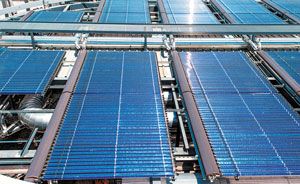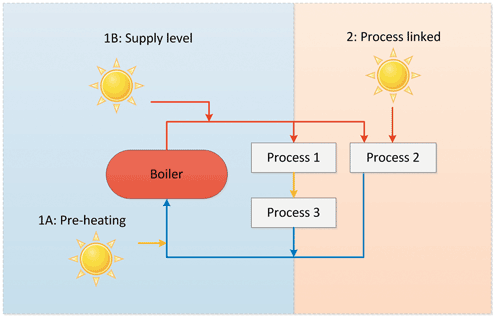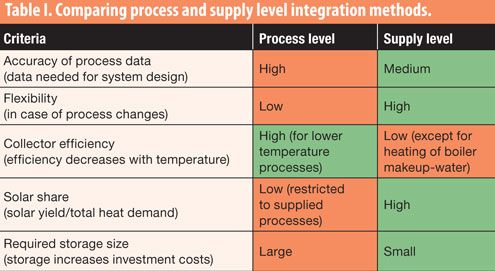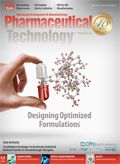Using Solar Energy for Process Heating
Renewable energy can improve energy efficiency and reduce carbon dioxide emissions in pharmaceutical manufacturing processes.
Nanisimova/shutterstock.com

Renewable power generation is on the rise worldwide, and in 2015, renewables were, for the first time, responsible for more than 50% of added capacity globally, exceeding fossil fuels and nuclear (1). The heating market lags behind in the adaptation of renewables in general, and this trend holds especially true for industrial process heating. Renewable solutions can reduce fossil fuel consumption and carbon dioxide (CO2) emissions in process heating. In pharmaceutical manufacturing, process heating represents a significant opportunity for improvement, because the process heating supply accounts for approximately two-thirds of the total final energy demand from a manufacturing site (2). Major pharmaceutical companies around the world have announced ambitious targets for their future energy use (3), and an increased uptake of solar process heating is expected in this sector.
In addition to energy collected by solar collectors, biomass and geothermal sources can be used for process heating; however, they are ultimately limited. Despite being in its infancy today, industrial process heating is predicted by the International Energy Agency to be the largest application of solar thermal technologies in the future (4). Solar thermal technologies are applied by pharmaceutical companies around the world today, as the three case studies in this article illustrate.
Integration into the heat supply
Developing solar process heating projects requires both cost-effective generation of solar heat and an efficient integration into the existing heat supply. Thus, a profound understanding of the heat supply as well as the various processes, their specific temperatures, and the load profile(s) are important. Two different integration approaches for solar process-supply level and process level-can be used, as shown in Figure 1.
Figure 1: Solar thermal energy can be integrated directly as process heat or indirectly as supply heat. Figures are courtesy of the author.

Both need to be further specified by the heat carrier and type of heat exchange applied, for example. The two approaches differ mainly in respect to the temperature and flow rate of the heat carrier, which results in different plant designs and yields. Six major criteria for selecting an integration approach and an indicative evaluation are depicted in Table I.

Defining an integration concept is inevitably linked to the choice of the collector technology--most importantly, the selection between non-concentrating and concentrating solar thermal collectors. In the first, the heat carrier circulates through the collector and is heated directly by the solar irradiation. The earliest type was the flat plate collector, in which pipes are placed in isolated boxes with a glass cover on top. More common today are evacuated tube collectors, in which the heat carrier circulates through pipes covered by an evacuated glass to reduce the heat losses. Both concepts are simple in design, but because their efficiency drops with increasing temperatures, a cost-effective application is limited to temperatures below 100 °C. Concentrating collectors, on the other hand, concentrate the sunlight with reflective surfaces on smaller absorbers and thereby can achieve temperatures even above 300 °C. This technology is more complex, especially as the collectors need to be moved to track the sun, and its application is spatially limited to regions with a reasonable share of direct (non-diffuse) irradiation. The following three examples show that solar process heating is already applied in the pharmaceutical sector, using different collector technologies and integration concepts.
Hot water generation at Sunil Healthcare in India
Sunil Healthcare, the second largest Indian manufacturer of capsule shells, located in Alwar, Rajasthan, uses flat-plate collector solar thermal energy for hot water generation. For capsule production, the company needs to prepare a gel at approximately 75 °C. Previously, the heat was provided by a diesel boiler. To reduce carbon emissions, the company installed 70 flat-plate collectors with a total aperture area of 147 m², a thermal capacity of 100 kW, and a hot water storage with 6.5-m³ capacity. Because the solar heat is only fed to the gel preparation, the integration is process linked. During sunny days, this system can cover the largest share of heat demand, while the boiler provides the remaining, when needed.
Steam generation at RAM Pharma in Jordan
Another approach was taken by RAM Pharma in Sahab, Jordan. Flexibility in respect to the use of the solar thermal energy was important, and because Jordan has a high share of direct solar irradiation, the company decided to install concentrating solar collectors, which provide heat at the supply level. A Fresnel collector system with an aperture area of 400 m² and a capacity of 230 kWth for direct steam generation was installed on the warehouse roof. Fresnel collectors use uniaxially tracked mirrors to concentrate sunlight on an absorber tube in which the heat transfer medium can reach temperatures of up to 400 °C. The installation at RAM Pharma uses direct solar steam generation, which means that no additional heat exchangers are used. The water partly evaporates in the absorber tube and is fed to buffer storage from which steam at 160 °C is directly released to the company steam grid. Such a steam drum offers further benefits to its users. It increases the capacity (because during peak demand the boiler and drum work in parallel) and smooths the pressure fluctuations within the steam supply, because the control valve can react more quickly than most fuel-fired boilers.
Heated air generation at Pfizer Manufacturing Deutschland GmbH in Germany
Within the scope of a rearrangement of processes and the implementation of continuous production, Pfizer Manufacturing Deutschland GmbH in Freiburg (Germany) installed a solar drying system for air-conditioning in the production facilities. Unlike most solar thermal installations, which use water or a water-glycol mix, the Solar Thermal Air Regeneration (STAR) 2 system uses air as a heat carrier. Four collector fields with (in total) 20 collectors and an aperture area of 110 m² were installed on the roof of the factory. The humid air from the production area streams through a sorption wheel where the humidity is dissipated to a desiccant. The sorption wheel is comprised of a wavelike fiberglass structure that contains the desiccant. It turns slowly, passing through a separated area where heated air, needed for regeneration, streams through the wheel. The humidity collected in the desiccant is removed (i.e., regeneration), the wet air is released to the outside, and the process starts again. The energy required for regeneration is fully or partially provided by the solar thermal collectors. In total, the STAR 2 system reduces CO2 emissions by 36 tons of CO2 annually, which is approximately as much as the combustion of 9000 L of diesel fuel.
Article Details
Pharmaceutical Technology
Vol. 41, No. 4
Pages: 64–65, 67
Citation:
When referring to this article, please cite it as M. Haagen, " Using Solar Energy for Process Heating," Pharmaceutical Technology 41 (4) 2017.
About the Author
Martin Haagen is business development manager at Industrial Solar, Freiburg, Germany, Tel: 49.761.767111.24. martin.haagen@industrial-solar.de.

Pharmaceutical Tariffs Are Imminent: How Industry is Bracing for Impact
April 16th 2025On April 14, 2025, the Trump Administration launched a national security-driven investigation into pharmaceuticals, a move that will likely result in tariffs being placed on pharmaceutical drugs, ingredients, and other components that are imported from outside of the United States.
Drug Solutions Podcast: A Closer Look at mRNA in Oncology and Vaccines
April 30th 2024In this episode fo the Drug Solutions Podcast, etherna’s vice-president of Technology and Innovation, Stefaan De Koker, discusses the merits and challenges of using mRNA as the foundation for therapeutics in oncology as well as for vaccines.